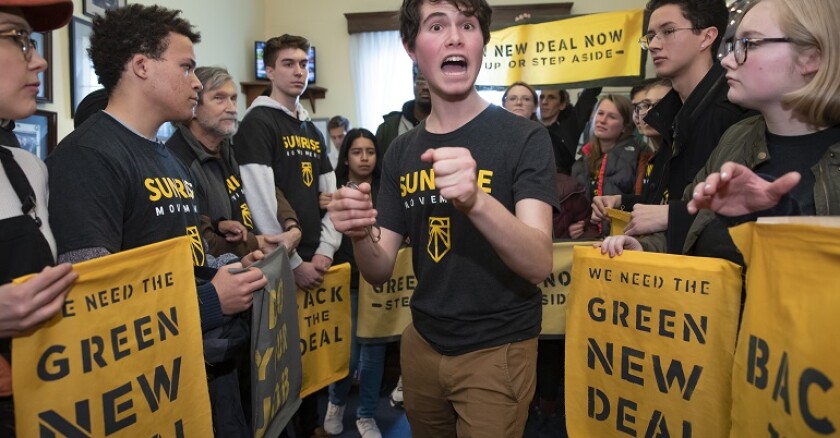SPEED READ:
- The Green New Deal has received a notably tepid response from Democratic leadership in Congress.
- Environmental activists are pushing for similar plans at the state level.
- Illinois already adopted its version of a Green New Deal called the Future Energy Jobs Act.
Democrats in Washington this month introduced legislation for a so-called Green New Deal, a framework of policy goals aimed at reorienting the American economy around an environmentally friendly future. Led by sponsors Rep. Alexandria Ocasio-Cortez of New York and Sen. Ed Markey of Massachusetts, supporters portrayed the bill as a vital step forward in making drastic cuts to the country’s carbon emissions while also creating millions of new jobs.
The measure was met with a decidedly mixed reception. Many people said its lofty goals -- including moving the nation to a completely renewable energy portfolio within 10 years and retrofitting “all existing buildings in the United States” to make them more energy efficient -- are so unattainable that they render the entire plan essentially useless. The bill received a notably tepid response from Democratic leadership. House Speaker Nancy Pelosi called it “one of several or maybe many suggestions” about environmental policy that Congress might consider. The proposal is a nonbinding resolution, though, meaning that even if it does pass, it won’t carry any actual weight.
It’s no surprise, then, that environmental advocates have been turning to states and cities to find support for some of the tenets of a Green New Deal.
A month before the federal legislation was introduced, on a Wednesday in early January, more than 100 young people gathered in the Minnesota Capitol for a meeting with newly inaugurated Democratic Gov. Tim Walz. The group, Minnesota Can’t Wait, had come to push for a state-level Green New Deal. As the meeting drew to a close, Walz said he would establish a statewide cross-agency working group on climate change. The governor’s 18-year-old daughter, who was in attendance, even promised to hold him accountable.
The idea of a Green New Deal has been around for at least a decade and a half. It was first floated in 2007, when New York Times columnist Thomas Friedman wrote about the concept as a way to realign American jobs around a greener economy. In 2016, Green Party presidential candidate Jill Stein and Democratic presidential hopeful Bernie Sanders included a Green New Deal as part of their platforms.
But given the gridlock at the federal level, activists are focusing their attention on states and cities where action on climate change seems more likely. “There’s already been several precursors to a Green New Deal at the state and local level [in the absence of federal action],” says Ben Beachy, director of the Sierra Club’s Living Economy program. “These efforts offer models for what a national Green New Deal could look like.”
One such effort he points to is Illinois’ Future Energy Jobs Act, which was signed into law in December 2016 after two years of collaboration between the state, unions, environmental groups and consumer associations. The law sets new energy efficiency standards and invests in weatherizing buildings across the state. According to its supporters, the act is expected to generate more than 7,000 new jobs in the state each year, reduce air pollution and climate change, and produce $4 billion in energy savings for Illinois families by 2030, with priority access for low-income households.
In this way, state and local governments can advance the spirit of a Green New Deal, says Beachy. But any such deal, he cautions, still needs the federal government. “We’re talking about a bold transformation of the economy to tackle the twin crises of inequity and climate change,” he says. “We need a systemic response for a systemic problem. The Green New Deal is a massive undertaking to create an equitable, clean energy economy that would require every level of government.”









